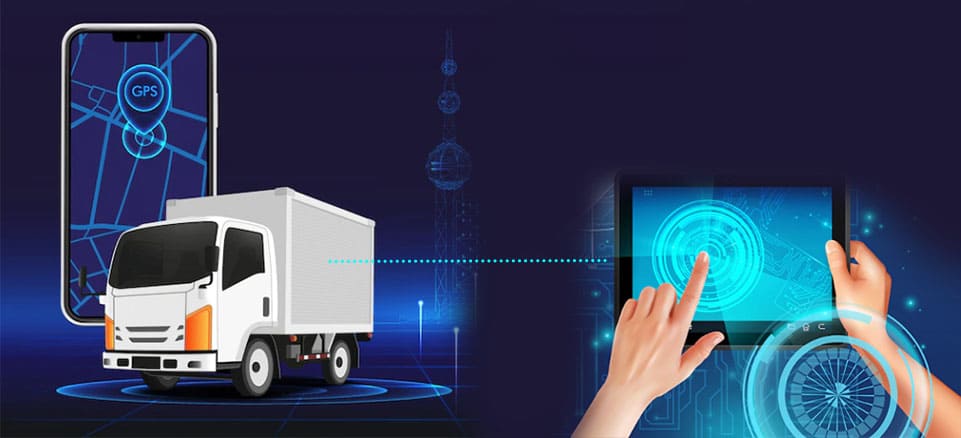
Connected Device - The Rule of Thumb in Embedded Systems Development
Connected Device - The Rule of Thumb in Embedded Systems Development
An embedded system is a custom-designed special purpose device used to perform a specific task. The design of an embedded system follows an integrated approach combining the hardware and software to attain specified functional requirements.
The development of an embedded system includes components such as a microprocessor or micro controller, RAM/ROM, communication ports, sensors, A-D converter, actuator, etc., connected and programmed based on performance and functional requirements.
We need an integrated approach to plan, design, test and validate the embedded system to optimize the function of each component, monitor and control their function, process control, instrumentation, application usage, and performance.


Develop Custom-Specific Embedded System with eLogicTech Edge
eLogicTech Edge follows an integrated approach to designing and developing an embedded system to meet your industrial or commercial requirements. Each embedded device developed at eLogicTech helps meet your functional requirement, identify loopholes in the process, get data insight, make real-time decisions, and many more.


Micro controllers with Analog or Mixed Circuit for Process Control, Instrumentation & Actuation
A micro controller is the key control unit of an embedded system controlling all the operations. We use micro controllers in automatically controlled products and devices such as automobile engine control systems, implantable medical devices, remote controls, power tools, remote control, and other embedded systems.
In the case of the input side of the system, Analog circuits (such as low-noise amplifiers, variable-gain amplifiers, filters, and oscillators) sense, receive and then amplify signals from a sensor microphone, antenna, wireline, etc.
For the output side of the system, the analog function is to reconvert the signal from digital to analog.
Mixed signal circuits interface the analog circuits with the DSP part of the system. Some mixed signal circuits are sample and hold circuits for signal sampling, analog to digital converters for amplitude discretization, digital to analog for signal sampling, etc.


System Development Based on Use-Case or Application
Embedded systems get designed and developed based on their use-case or application and functional requirements. Real-time, standalone, network, and mobile are different categories based on functional requirements.
A high-speed real-time embedded system requires a high-speed analog-to-digital and digital-to-analog converter and associated circuitry for clocking, gating, triggering, and synchronizing multiple channels. Digital upconverter and downconverter ASICs provide frequency translation for communication and radar application. FPGAs handle real-time processing tasks such as FFTs, encoding-decoding, encryption-decryption, modulation-demodulation, and beamforming.
Some real-time-based systems are autonomous or semi-autonomous vehicle control, aircraft control, etc. A manufacturing assembly line with robotic components may require a real-time embedded system to perform a task on time, such as sealing a toothpaste tube.
Communication Interface
The communication interfaces used in an embedded system help the system communicate with other devices by connecting them to the internet, remote servers, or devices. The types of communication interfaces used in the embedded system are onboard communication interfaces such as I2C Bus, SPI BUS, and UART and external communication interfaces like RS-232 C, USB, Firewire, and others.


Remote Monitoring
Embedded system devices enable remote monitoring with connected technology. Embedded medical devices with communication protocols like SPI, I2C, and UART help fast and long-distance data transmission.
Medical professionals can easily manage their operations even in remote areas using connected technology

OTA
Embedded systems get deployed in places where it is difficult for a human operator to access. For example, the embedded system deployed to monitor the health of a person or machine requires OTA updates.
An OTA update replaces the software on the microcontroller or microprocessor with new software. Communication protocols such as Bluetooth Low Energy and 6LoWPAN support security and data exchange that OTA update software can leverage during the OTA process.


Future-Proofing
The communication interface helps send a notification to the system processor and alerts them of future conditions. For example, SMB notifications get often used by the device to alert the system processor if the temperature crosses the threshold limit.
Many devices use a separate alert pin asserted to raise a non-makable or system management interrupt.

Functional Control
TCS layer and audio is a middleware protocol group designed to support telephony functions. It includes call control and group management. For instance, once a call gets established. Then a Bluetooth audio channel can carry the call’s voice content. TCS can also help set up data calls.
The device's functional updates are easy to access due to communication interfaces and are effectively controlled.


Fleet Management
Fleet management in vehicles led to the formation of FMS standards. And thus standardize communication-specific in-vehicle communication. Fuel consumption monitoring using the FMS standard enables fuel level checks, high-resolution fuel consumption, power transmission output, and total fuel used.
CAN (Control area network) is a communication protocol primarily developed for automotive but now used for aerospace, military, and industrial application due to its simplicity, reliability, and electromagnetic immunity.
Communication Interface Ensuring Device to be Future-proof
By incorporating a communication interface, embedded systems are becoming future-proof, easily accessible, and have more control over function.

Right Talent Pool with High Engineering Bandwidth
Embedded product development companies choose the right talent and specialists with appropriate experience levels. Availability of the necessary skills enables them to implement even complex project designs and products successfully.
Unavailability of the right resource is a huge investment, time, and resource risk. Engineers with high bandwidth, rich exposure in design and development, and knowledge of the product life cycle of various domains help them to focus on analyzing, designing, coding, testing, prototyping, and developing customized IoT embedded software and hardware.


Insights, Optimization, & Faster Feedback with Embedded Systems

The Embedded system uses sensors to capture the physical world data and transform it into data insight.Acoustics, chemical, electrical, environmental, and image sensors used in the device recognize audio vibration, measure fluid composition, measure and assess deviations in physical state, etc.
The calibration of sensors allows them to capture data that is application specific. The analog data gets converted to digital data. Connected through gateways, these sensors relay the collected data to a server cloud and get accessed on computers for data analysis. Data analysis gives an insight into trends and patterns.
For example, the usage of embedded devices with smart sensors enables tracking real-time positioning of vessel position and cargo container status. The location and movement data provides a fleet management system, enables shipping companies and producers to make informed decisions, improves fuel efficiency, etc.
Data insight helps organizations to optimize their current process and make more informed decisions based on the insight and feedback.


